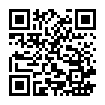Проактивная система предотвращения инцидентов скулшутинга: что имеет значение?
Научная статья
Аннотация
Литература
2. Katsiyannis A., Whitford D. K., Ennis R. P. Historical examination of United States intentional mass school shootings in the 20th and 21st centuries: Implications for students, schools, and society. Journal of Child and Family Studies. 2018;27(8):2562–2573. DOI 10.1007/s10826-018-1096-2.
3. Oksanen A., Kaltiala-Heino R., Holkeri E. [et al]. School shooting threats as a national phenomenon: Comparison of police reports and psychiatric reports in Finland. Journal of Scandinavian Studies in Criminology and Crime Prevention. 2015;16(2):145–159. DOI 10.1080/14043858.2015.1101823.
4. Rocque M. Exploring school rampage shootings: Research, theory, and policy. The Social Science Journal. 2012;49(3):304–313. DOI 10.1016/j.soscij.2011.11.001.
5. Kostinsky S., Bixler E., Kettl P. Threats of school violence in Pennsylvania after media coverage of the Columbine high school massacre. Archives of Pediatric and Adolescent Medicine. 2001;155(9):994–1001. DOI 10.1001/archpedi.155.9.994.
6. Kissner J. Are active shootings temporally contagious? An empirical assessment. Journal of Police and Criminal Psychology. 2016;31:48–58. DOI 10.1007/s11896-015-9163-8.
7. Lankford A. Fame-seeking rampage shooters: Initial findings and empirical predictions. Aggression and Violent Behavior. 2016;27:122–129. DOI 10.1016/j.avb.2016.02.002.
8. Langman P. Role models, contagions, and copycats: An exploration of the influence of prior killers on subsequent attacks. 2017. URL: https://schoolshooters.info/sites/default/files/role_models_2.1.pdf (accessed: 10.05.2022).
9. Карпова А. Ю., Чайковский Д. В. «Пост-Колумбайн эффект»: стохастический терроризм // Вестник Национального антитеррористического комитета. 2019. № 2(22). С. 45–53.
10. Karpova A.; Savelev A.; Maksimova N. Modeling the process of school shooters radicalization (Russian case). Social Sciences. 2021;10(12):477. DOI 10.3390/socsci10120477.
11. Карпова А. Ю., Максимова Н. Г. Скулшутинг в России: что имеет значение? // Власть. 2021. Т. 29, № 1. С. 93–108. DOI 10.31171/vlast.v29i1.7920. EDN QLQYTP.
12. Свидетельство о государственной регистрации базы данных № 2022621125 РФ. Результаты социологического исследования «Скулшутинг в России: социально-демографические данные, мотивы, характеристики инцидентов» : № 2022621020 : заявл. 13.05.2022 : опубл. 19.05.2022 / А. Д. Вильнин, Е. А. Замышевская, А. Ю. Карпова [и др.]; Томский Политехнический Университет. EDN AHDNXA.
13. Свидетельство о государственной регистрации программы для ЭВМ № 2023660578 РФ. Интерактивная карта скулшутинга : № 2023660065 : заявл. 23.05.2023 : опубл. 23.05.2023 / А. Д. Вильнин, А. Ю. Карпова, С. А. Кузнецов [и др.]; Национальный исследовательский Томский политехнический университет. EDN RUWJCB.
14. Максимова Н. Г. Базы данных как эффективный инструмент анализа и предупреждения инцидентов скулшутинга // Наука. Культура. Общество. 2022. Т. 28, № 4. С. 44–55. DOI 10.19181/nko.2022.28.4.4. EDN QALDCG.
15. Muschert G. W. School shootings as mediatized violence. In: Böckler N., Seeger T., Sitzer P., Heitmeyer W. (eds) School Shootings. New York, NY: Springer; 2012. P. 265–281. DOI 10.1007/978-1-4614-5526-4_12.
16. Murray J. L. Mass media reporting and enabling of mass shootings. Cultural Studies ↔ Critical Methodologies. 2017;17(2):114–124. DOI 10.1177/1532708616679144.
17. Langman P. A guide to insider references used by school shooters and other attackers. 2020. URL: https://schoolshooters.info/sites/default/files/insider_references_1.1.pdf (accessed: 11.05.2022).
18. Maryland’s Model Policy for Behavior Threat Assessment (2018). URL: https://schoolsafety.maryland.gov/Documents/Reports-Docs/Maryland%20Model%20Policy%20for%20Behavior%20Threat%20Assessment-2018-19.pdf (accessed: 05.05.2024).
19. Cornell D., Sheras P. Guidelines for responding to student threats of violence. SoprisWest; 2006. ISBN 978-1593185022.
20. Alathari L. [et al.]. Enhancing school safety using a threat assessment model: An operational guide for preventing targeted school violence. National Threat Assessment Center; 2018. URL: https://www.cisa.gov/sites/default/files/publications/18_0711_USSS_NTAC-Enhancing-School-Safety-Guide.pdf (accessed: 05.05.2024).

Поступила: 06.05.2024
Опубликована: 01.07.2024


.jpg)



